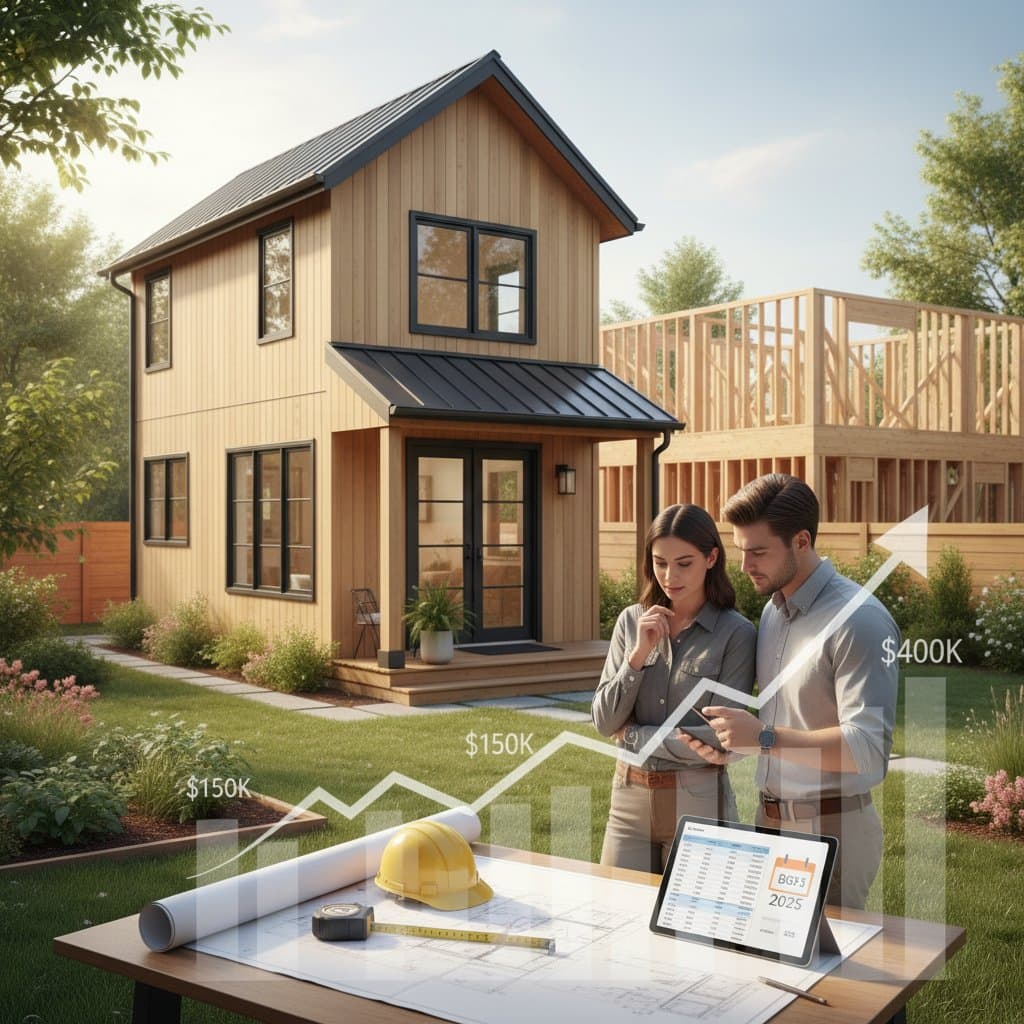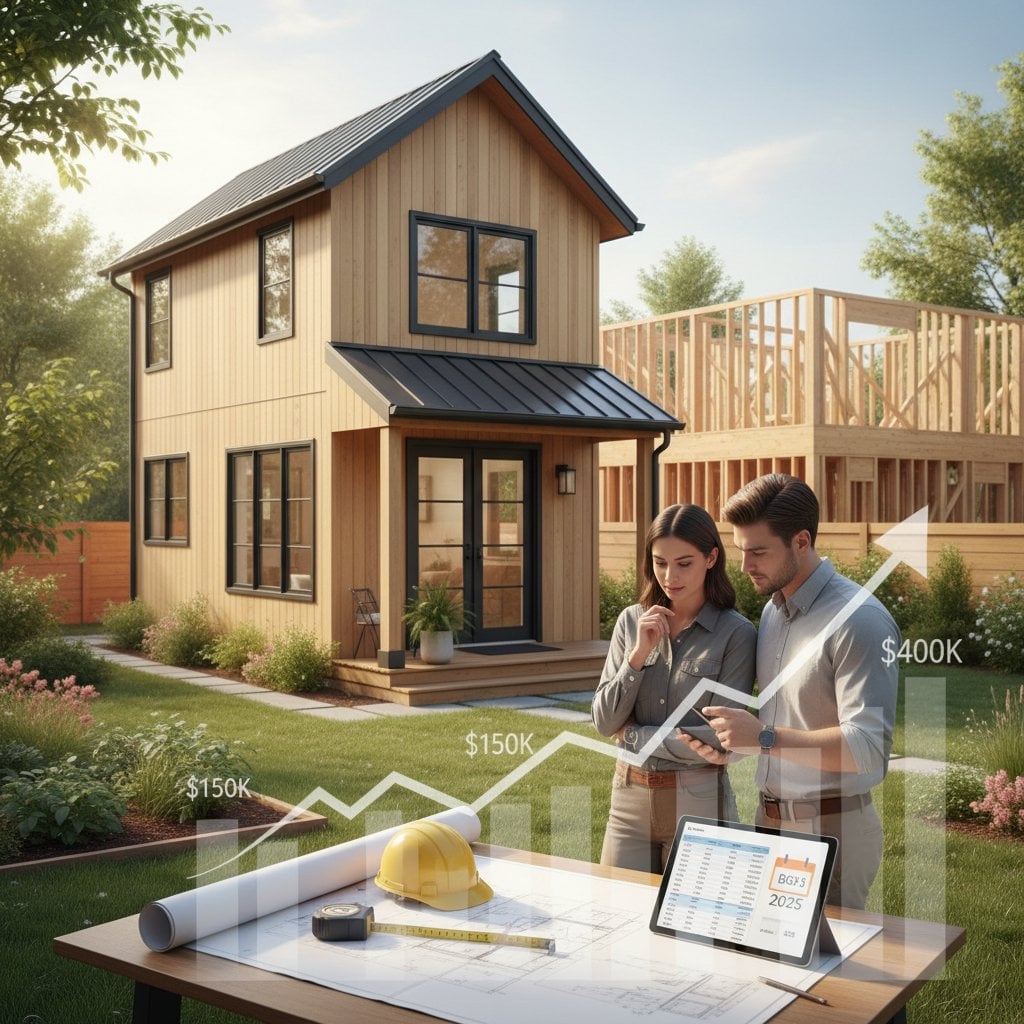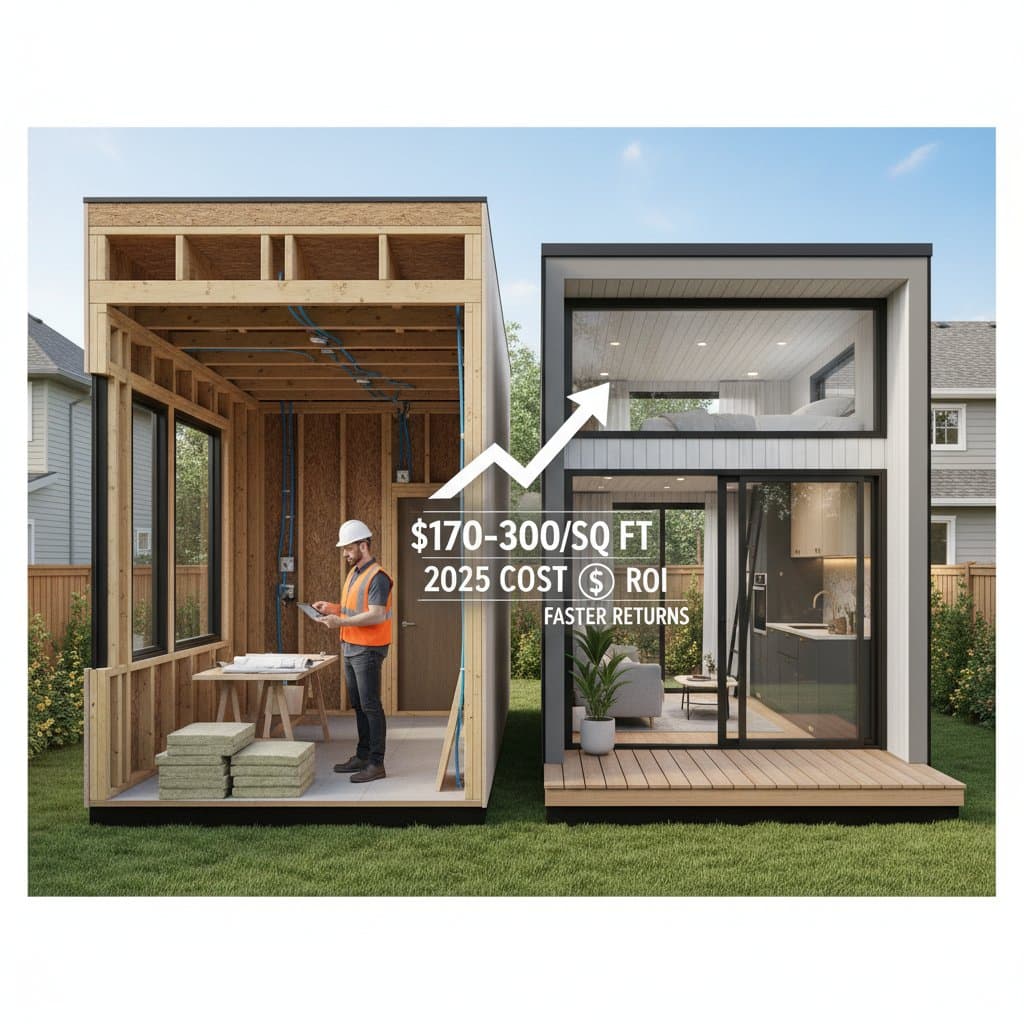ADUs in 2025: Comprehensive Cost Analysis and Investment Potential
Essential Overview
An accessory dwelling unit (ADU) serves as a secondary living space on the same property as a primary residence. Options include detached structures like backyard cottages, attached additions sharing a wall with the main house, or conversions of existing spaces such as garages or basements. In 2025, construction costs for these units typically fall between $180 and $400 per square foot, influenced by factors like location, materials, and complexity. For a standard 600- to 800-square-foot ADU, total expenses often span $150,000 to $300,000. Projects generally require four to eight months from planning to completion, with moderate planning challenges and higher demands during the build phase. Financial risks remain manageable, particularly when the unit generates rental income, yielding returns of 5 to 10 percent annually in high-demand areas.
Detailed Planning and Execution Guide
1. Verify Property Suitability
Begin by reviewing local zoning regulations, lot dimensions, and setback requirements. Municipalities often mandate a minimum lot size of 7,500 square feet and ensure adequate access for emergency vehicles. Consult your city's planning department or use online zoning maps to confirm compliance.
Key Verification: Proceed only after documenting that your property aligns with all applicable codes, avoiding costly redesigns later.
2. Determine the Optimal ADU Configuration
Evaluate whether a detached unit, attached extension, garage conversion, or basement apartment best suits your needs and site constraints. Detached ADUs offer privacy but require new foundations, while conversions minimize site disruption by repurposing existing structures. Consider utility access, such as proximity to the main home's water and electrical lines.
Key Verification: Assess feasibility by mapping utility connections to ensure safe, code-compliant integration without overburdening the primary systems.
3. Develop Design Plans and Establish Budget
Engage an architect or certified designer to create detailed blueprints that adhere to building standards, including energy efficiency mandates. Allocate funds across categories: permits (5-10 percent of total), labor (40-50 percent), materials (30-40 percent), and unforeseen site preparations (10-15 percent). For instance, premium finishes like quartz countertops can add $20 to $50 per square foot.
Key Verification: Cross-reference plans against local ADU ordinances, such as height limits or parking provisions, to prevent permit rejections.
4. Obtain Necessary Approvals and Funding
Prepare and submit architectural drawings, site surveys, and environmental impact statements to the local building authority. Processing times vary from 30 to 90 days, depending on jurisdiction. Secure financing through home equity loans, construction-specific mortgages, or grants for energy-efficient builds, which may cover up to 20 percent of costs in qualifying areas.
Key Verification: Withhold any on-site work until you receive stamped permits and display them visibly, as violations can result in fines exceeding $1,000 per day.
5. Conduct Site Preparation
Clear vegetation, grade the terrain for proper drainage, and erect protective barriers to secure the work area. Address soil stability through testing, especially in regions prone to expansive clays or seismic activity, which may necessitate engineered footings.
Key Verification: Confirm the site is debris-free, level within one inch per 10 feet, and fenced to comply with safety regulations before foundation work commences.
6. Construct the Foundation and Core Structure
Professional crews pour concrete footings, erect wooden or steel framing, and install the roof assembly. In seismic zones, reinforce with shear walls and hold-down anchors to meet stringent safety codes.
Critical Alert: All structural elements require inspection at key stages; deviations can lead to collapse risks or mandatory rebuilds.
Key Verification: Ensure the completed shell measures precisely square, remains plumb vertically, and seals against weather to protect interior work.
7. Integrate Mechanical Systems and Insulation
Qualified electricians, plumbers, and HVAC specialists route wiring, piping, and ductwork from the main residence. Opt for high-R-value insulation, such as spray foam in walls and attics, to achieve energy codes that demand at least R-19 for ceilings.
Key Verification: Schedule rough-in inspections immediately after installation; failures here, like improper grounding, delay drywall and finishing by weeks.
8. Complete Interior and Exterior Finishes
Apply drywall, prime and paint walls, lay resilient flooring, and install cabinetry. For exteriors, select weatherproof siding like fiber cement and ensure roofing integrates flashing to prevent water intrusion.
Key Verification: Test all systems—plumbing for leaks, electrical for functionality, and windows for airtight seals—while inspecting surfaces for even application and secure fixtures.
Inspection Protocols and Common Resolutions
Regularly examine the structure for foundation cracks wider than 1/8 inch, roof leaks, or misaligned finishes that could compromise integrity. Operate appliances, flush fixtures, and check electrical circuits under load to identify faults early. Address issues like condensation from poor sealing by applying additional caulk or vapor barriers; persistent problems, such as faulty wiring, demand immediate intervention from certified experts to avert hazards.
Engaging Professional Expertise
Delegate complex tasks to licensed professionals for electrical systems, including subpanel additions to handle increased loads; gas infrastructure modifications to supply heating or cooking; foundational engineering on sloped or unstable terrain; and sewer tie-ins that comply with capacity limits. Rates for these specialists range from $100 to $250 hourly, with full projects costing $10,000 to $50,000 based on scope. Always request proof of liability insurance, bonding, and at least three client references prior to commitment.
Maximizing Returns and Sustaining Value
Building an ADU enhances property appeal by adding 20 to 30 percent to overall market value while providing flexible housing for aging relatives or generating steady rental revenue. In urban markets, expect $1,500 to $3,000 monthly rents for a 600-square-foot unit, translating to 5-10 percent yields after expenses. Prioritize durable, low-maintenance features like vinyl plank flooring and LED systems to minimize upkeep costs over 20-30 years. Maintain meticulous records of construction outlays, ongoing utilities, and income streams to calculate precise ROI and leverage tax deductions for home improvements.
Strategies for Optimal Outcomes
Incorporate adaptable layouts, such as modular walls for converting living areas into home offices or extra storage. Integrate smart thermostats and solar-ready roofing to cut utility bills by 20-30 percent annually. Select mold-resistant drywall and stainless fixtures in wet zones to extend longevity. Proactively book inspections at each phase milestone to streamline timelines and sidestep rework that inflates budgets by 15-25 percent.
Through meticulous planning, strict adherence to regulations, and strategic professional involvement, your ADU becomes a seamless extension of your property—delivering enduring financial gains and lifestyle enhancements.










